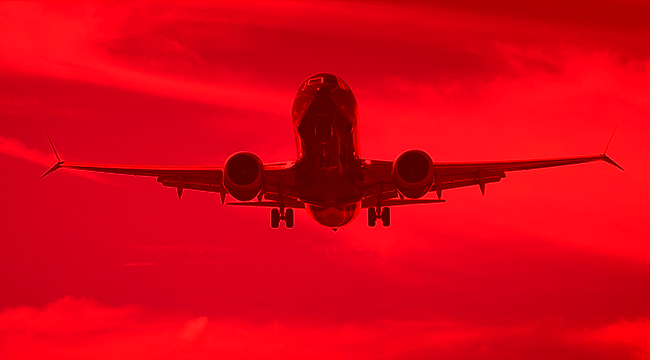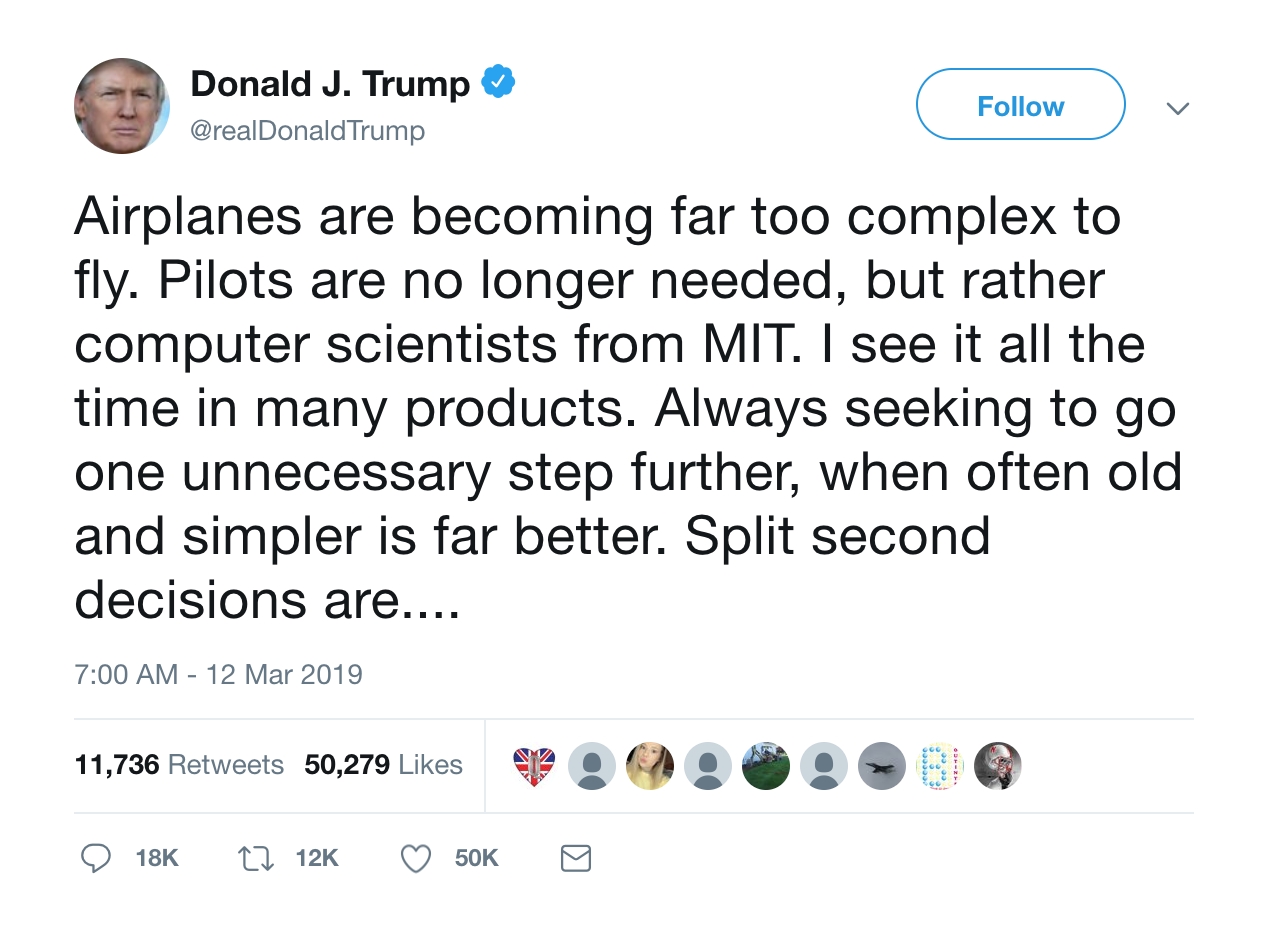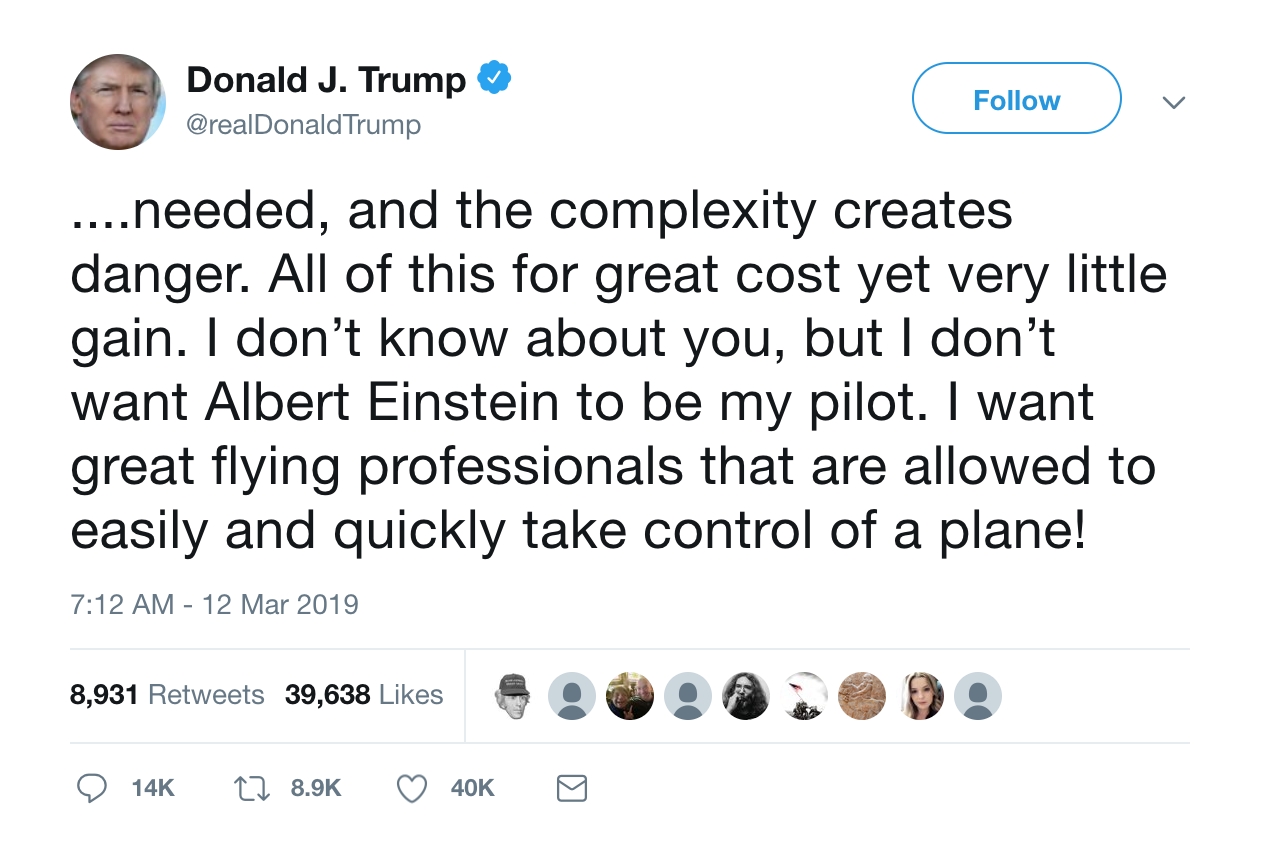
After a Boeing 737 Max 8 plane wrecked in Ethiopia on Sunday, it didn’t take long for reporters and aviation watchdogs to note similarities between Ethiopian flight ET302 and the Lion Air flight that crashed shortly after departing from Jakarta in October. Both flights showed dramatic fluctuations in their vertical speed, almost immediately after takeoff.
Aviation journalists at FlightRadar24 and aviation engineers who have looked at the preliminary crash report from the Lion Airlines flight have noted a battle between the 737 Max 8’s Maneuvering Characteristics Augmentation System (MCAS) — its anti-stall system — and the Lion Air pilots. The system is able to override the pilots and pitch the plane’s nose down when it detects the potential for a stall. A faulty Angle of Attack sensor, misjudging the plane’s angle, could, therefore, order the MCAS to pitch the nose down, while the pilots tried forcing the plan to climb, manually.
This malfunction is, by all indications, what happened in the Lion Air flight and the very early data for the ET302 flight seems to indicate a similar situation. The black box data has yet to be analyzed, but early flight path comparisons note similarities.
After the Lion Air crash, Boeing directed flight crew to its operations manual bulletin. It seems that the ability to override the MCAS system has been considered a “pilot memory item” — meaning that pilots should be able to remember it offhand — but the battle between automation and the pilots themselves recorded in the black box data from the Lion Air flight would obviously prove confusing for those in the cockpit. It essentially means fighting against the plane you are flying. Recognizing the unusual situation, pilots on the Lion Air flight requested a chance to return to the runway only two minutes after takeoff. Pilots on the ET302 flight also promptly requested a return to base.
In light of this information — still at this point conjecture, but with solid support from early information — airlines (and entire nations) are racing to ground their 737 Max 8 fleets. China, Singapore, Indonesia, Australia, Cayman Airlines, the UK, Iceland, Germany, France and Holland have all suspended 737 Max 8 flights to and from their airspace. A number of individual carriers, like Aeromexico and British carrier TUI, have also shut down their 737 Max 8 fleets for the time being. The Association of Flight Attendants have also expressed concerns about continuing to fly on the planes.
Boeing Statement on 737 MAX Operation: https://t.co/mrzADVRMKZ pic.twitter.com/L8eF4r0pTl
— Boeing Airplanes (@BoeingAirplanes) March 12, 2019
Boeing is yet to blink on this matter and the FAA has not banned the plane from United States airspace. Meanwhile, politicians are beginning to encourage a freeze on 737 Max 8 flights, at least until further research can be done. Senators Richard Blumenthal (D), Dianne Feinstein (D), Mitt Romney (R), and Elizabeth Warren (D) have all called for the FAA to order a temporary shutdown of Boeing 737 MAX 8 flights. Warren has made the most complete statement, saying:
The world has now witnessed the second tragic crash of one of these planes in less than six months. While we do not know the causes of these crashes, serious questions have been raised about whether these planes were pressed into service without additional pilot training in order to save money. The FAA itself has indicated that software updates are likely coming. Any necessary changes must be made before, not after, more flights occur and more lives are potentially endangered.
The Boeing 737 MAX 8 is a major driver of Boeing profits. In the coming weeks and months, Congress should hold hearings on whether an Administration that famously refused to stand up to Saudi Arabia to protect Boeing arms sales has once again put lives at risk for the same reason. But that is a question to be answered another day. Today, immediately, the FAA needs to get these planes out of the sky.
President Trump has also entered the fray. He seems to have been briefed on questions surrounding the 737 Max 8’s MCAS system, tweeting that airplanes are becoming “far too complex to fly.”


With questions about the training that pilots have on overriding the 737 Max 8’s MCAS system being surfaced by airline experts and amplified by Warren, questions about the viability of this plane are sure to persist. Meanwhile, as multiple outlets have reported, Boeing was already working on a software upgrade to the 737 Max 8, initiated after the Lion Air wreck. It’s expected in April.
